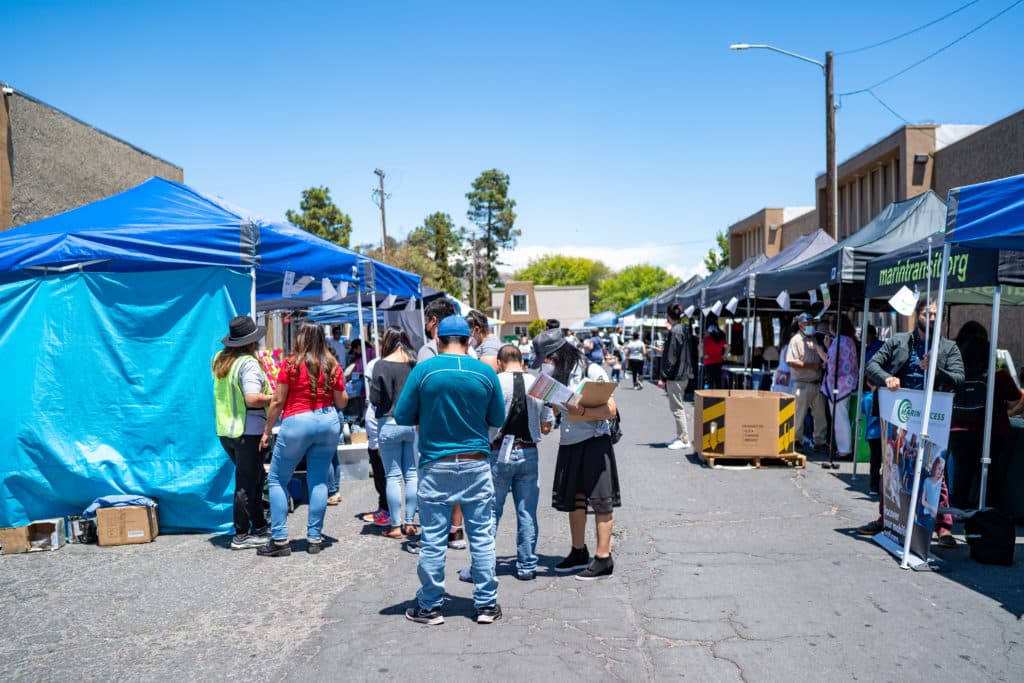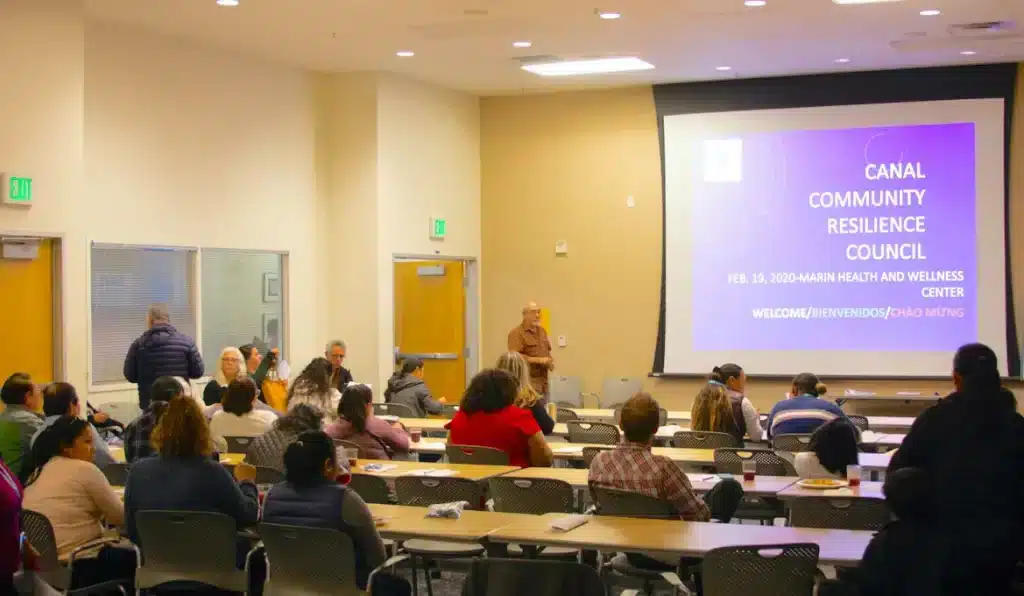More Chances for San Rafael Canal Communities to Be Heard
January 18, 2023
by Isabella Eclipse | Jan 18, 2023

San Rafael’s Canal neighborhood has long struggled with both economic and environmental inequalities. In November 2022, however, the San Rafael City Council launched the Canal Community Resilience Planning Project, a study investigating the feasibility of sea-level rise adaptation in the Canal neighborhood. The city received a $762,000 grant from the California State Coastal Conservancy and the Marin Community Foundation to explore ways to fortify the Canal’s infrastructure against flooding, with special consideration for its disadvantaged residents on the frontlines of climate change. More uniquely, the Canal Project emphasizes community-based organizations (CBOs) playing an active role in decision-making.
The Canal’s low-lying wetland surroundings experience frequent flooding, but additional factors further exacerbate residents’ disproportionate vulnerability to sea level rise. The Canal is the most racially segregated district in the Bay Area, with a 90% Hispanic, mostly immigrant, population. Compared to other communities, Canal residents have lower incomes, larger families, and poorer health. Almost half of the Canal’s population puts more than 30% of their paycheck into keeping a roof over their heads, leaving little to prepare for rising waters.
This is where CBOs like the Multicultural Center and Canal Alliance come in. “[These organizations] will be driving the community engagement process and making sure that those who are most impacted are the ones involved in the planning and decision-making around the best path forward,” says Kate Hagemann, who is managing the Canal Project for the City of San Rafael.
In November 2019, the Multicultural Center launched the Canal Community Resilience Council to give the community a voice at the table. The Council, led by Marco Berger and composed of residents and community partners, holds public meetings to discuss issues ranging from housing to climate emergency preparedness. Project leaders hope the rapport the council has built with residents will create more opportunities for community feedback on the Canal Project.
The Multicultural Center plans to create a steering committee of community members with oversight of the feasibility study from start to finish. The Center will also provide training to city staff on cultural norms and the immigrant experience. “It is important to remember the project is working with a community in survival mode,” says Berger. For residents struggling to make ends meet and put food on the table, climate change can seem irrelevant. As such, the project highlights how sea level rise is already impacting their everyday lives. Other practical considerations include providing childcare, Spanish (and Vietnamese) translation services, and a flexible schedule for community meetings.

The second CBO, the Canal Alliance, will use their forty years of experience in immigrant advocacy to make sure the study’s recommendations represent Canal residents’ interests. As a first step, the Alliance will lead a focus group on housing security and climate adaptation to guarantee any infrastructure solutions identified by the Canal Project do not displace community members or promote gentrification.
There is widespread recognition that the Canal Project represents an exciting new kind of collaborative adaptation planning. “This project is calling for a bottom-up approach to designing future infrastructure,” says Aaron Burnett, director of policy and civic engagement at the Canal Alliance. “I love that there is a real intentional effort to achieve climate justice, not just talk about it.”
Read the story at Knee Deep Times